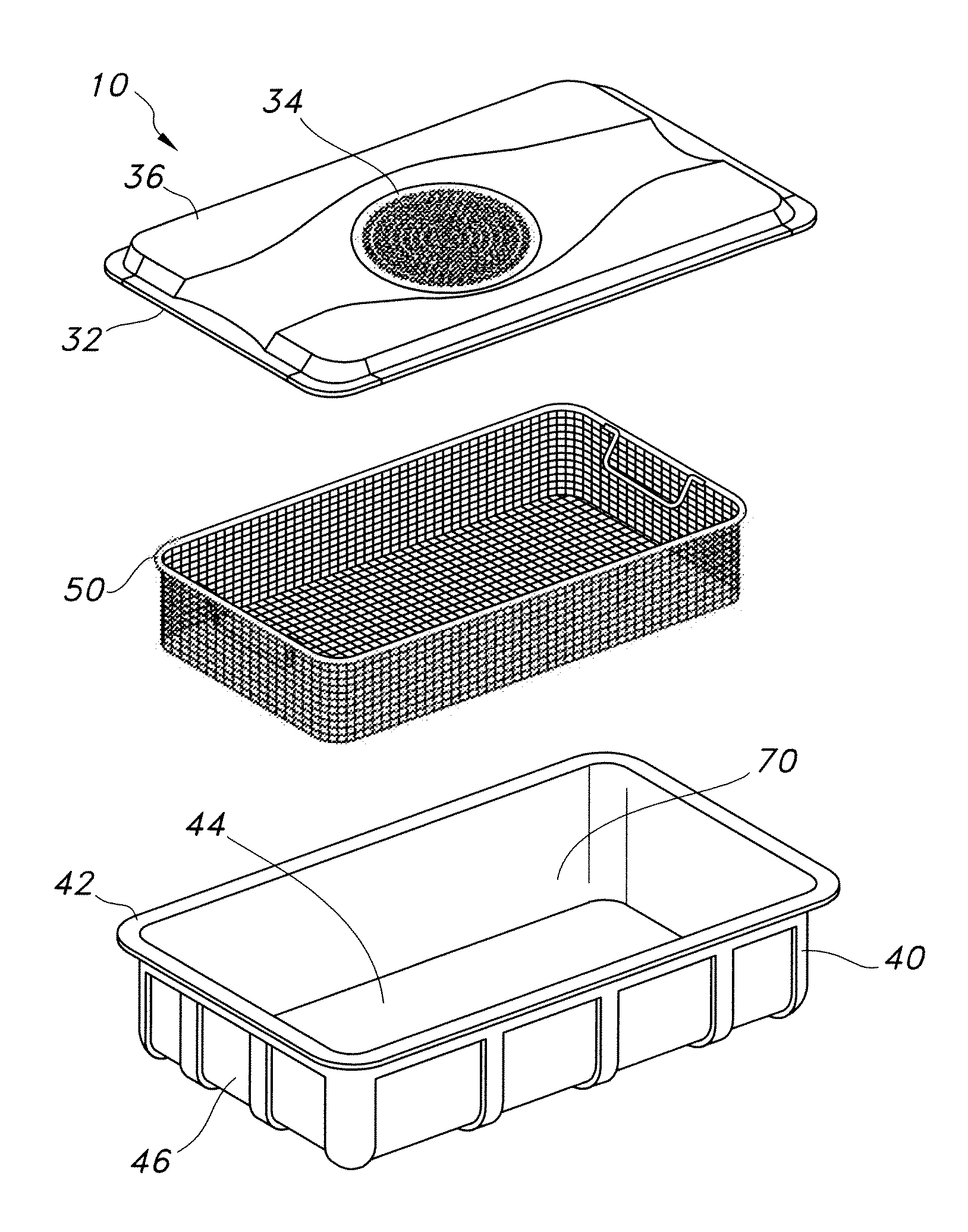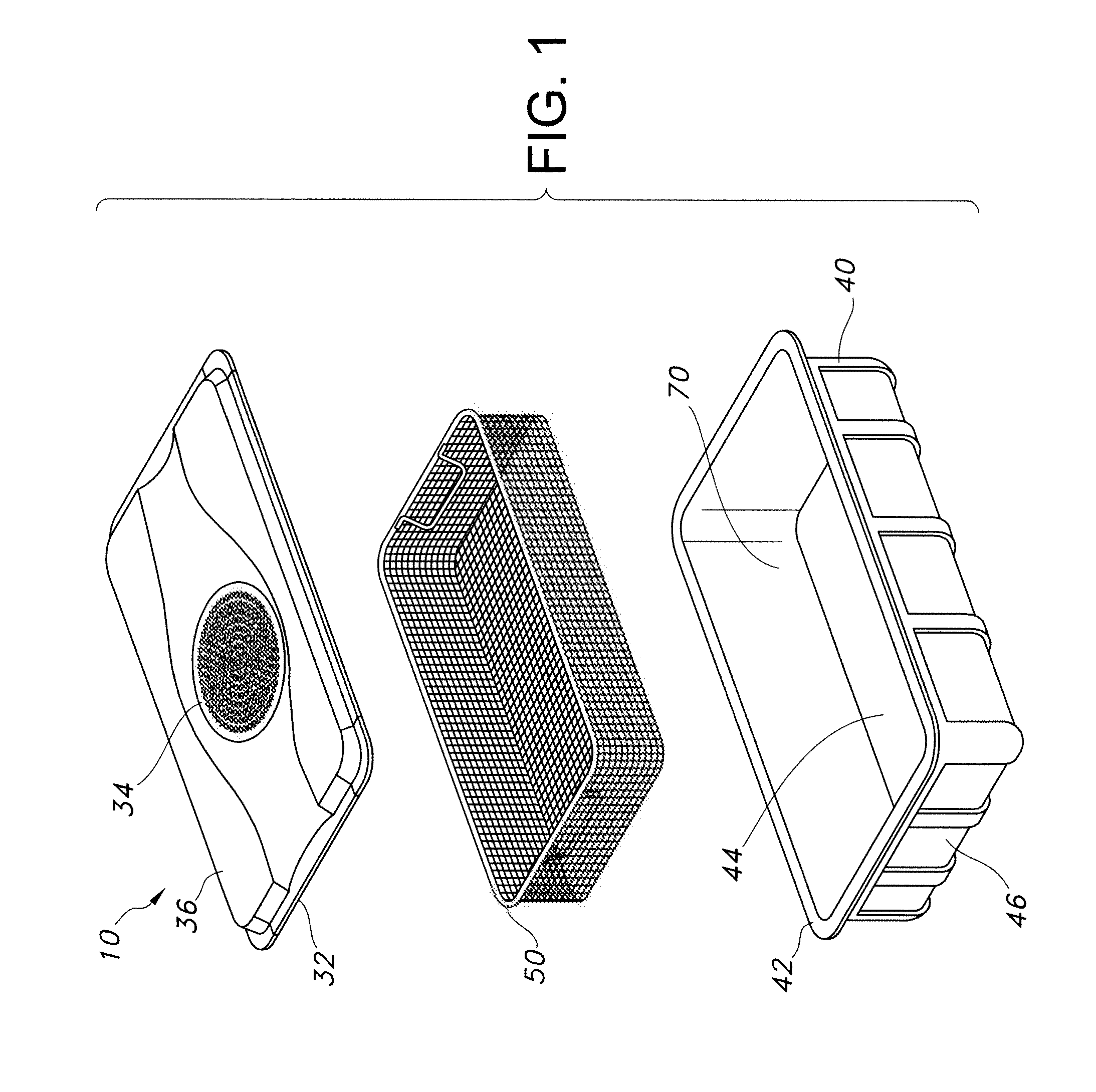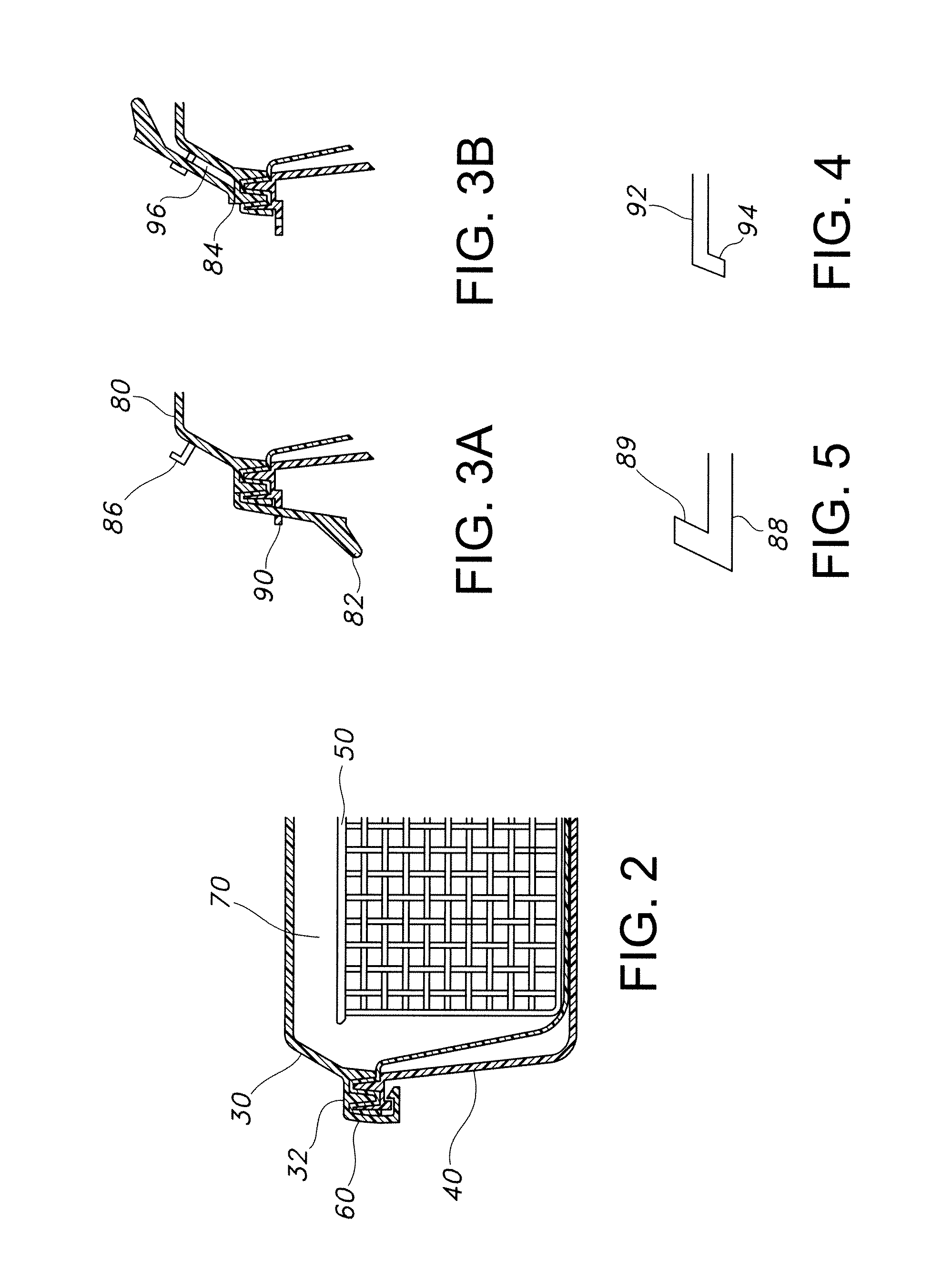Sterilization Container With Releasable and Permanent Lock
a technology of sterilization container and lock, which is applied in the direction of pliable tubular container, liquid handling, caps, etc., can solve the problems of contamination to reach the items, and other sources of small tears or snags in the barrier,
- Summary
- Abstract
- Description
- Claims
- Application Information
AI Technical Summary
Benefits of technology
Problems solved by technology
Method used
Image
Examples
Embodiment Construction
[0027]The present disclosure provides a locking container for sterilizing and storing surgical materials and aseptically opening and aseptically preserving surgical materials in a sterilized condition. These containers offer an increased level of confidence of the sterility of the contents while allowing a user to open the container prior to sterilization to check the contents to ensure that the proper instruments are present in the container. This functionality also allows a user to add an item that may be needed for a specialized surgery or to subtract an extra item that is not needed for a particular surgery.
[0028]The disclosure will be described with reference to the following description and figures which illustrate certain embodiments. It will be apparent to those skilled in the art that these embodiments do not represent the full scope of the disclosure which is broadly applicable in the form of variations and equivalents as may be embraced by the claims appended hereto. Furt...
PUM
| Property | Measurement | Unit |
|---|---|---|
| Melting point | aaaaa | aaaaa |
| Water vapor transmission rate | aaaaa | aaaaa |
| Permeability | aaaaa | aaaaa |
Abstract
Description
Claims
Application Information
 Login to View More
Login to View More - R&D
- Intellectual Property
- Life Sciences
- Materials
- Tech Scout
- Unparalleled Data Quality
- Higher Quality Content
- 60% Fewer Hallucinations
Browse by: Latest US Patents, China's latest patents, Technical Efficacy Thesaurus, Application Domain, Technology Topic, Popular Technical Reports.
© 2025 PatSnap. All rights reserved.Legal|Privacy policy|Modern Slavery Act Transparency Statement|Sitemap|About US| Contact US: help@patsnap.com



